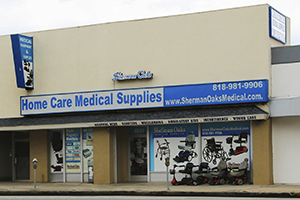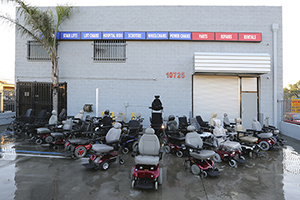Canes Basic Guide
A cane is a stick used to give you support and balance when walking. Most canes are made of metal, wood, or plastic. You may need to use a cane if you are weak on one side of your body. If you have balance problems you may also need to use a cane. The cane may decrease your pain when walking because it takes weight off your leg and joints. Using a cane may help you to feel less tired.

- Standard canes: This type of cane is usually made of wood or metal. The cane may be 34 to 42 inches (86 to 107 cm) long and may have a rounded crook handle. This cane is easy to use and is usually not very expensive. Try to get a cane that has a wooden or plastic handle instead of metal. A metal handle may slip from your hand if your hand sweats. In cold weather the metal handle may get too cold for you to touch.
- Decreases the load on the affected leg and/or assists with balance
- Of all walking aids, canes provide the least amount of stability
- Held in the opposite hand to the affected leg
- When walking outside in the winter, an ice pick should be installed at the tip of the cane
- Straight-handled canes: This cane may also be called a "T-handle cane" and is usually made of wood, plastic, or metal. You may need this type of cane if your hand is weak. Using a T-handle cane may help you be more steady when you walk. It is important that the height of the cane is correct for you.
- Broad-based canes (Quad Canes): This is a lightweight metal cane with 3 or 4 short legs. These legs give you a lot of support. The legs also allow the cane to stand-up when not in use. You may need this type of cane because it is hard for you to keep your balance.
- Decreases the load on the affected leg and/or assists with balance
- More stable than a single point cane
- Held in the opposite hand to the affected leg
- Comes in two sizes: large-base and small-base
How to get in & out of a chair
How to get into a chair:
- Stand with the back of your legs against the chair seat.
- Rest the cane against the chair.
- Reach back with both hands to grip the chair arms.
- Put your weaker leg slightly off the floor.
- Put all your weight on your stronger leg.
- Slowly sit down and slide backwards into the chair.
How to get out of a chair:
- Hold your cane with your stronger hand.
- Grasp the arms of the chair.
- Put your stronger foot a little forward.
- Lean a little forward and push on the arms of the chair to raise yourself.
- Stand with your cane about 4 inches (10 cm) to the side of your stronger foot.
- Wait a few seconds to get used to standing before you start walking.

How to walk on flat floors
- Put the cane about 4 inches (10 cm) to the side of your stronger leg.
- Put weight on your stronger side.
- Move the cane about 4 inches (10 cm) in front of your stronger leg, bringing your weaker leg forward at the same time.
- Using the cane to help keep your weight off your weaker leg, move your stronger leg ahead.
- Your heel will be a little beyond the tip of the cane.
- Repeat these steps and try to walk straight.
Note: The affected leg should move forward with the cane
Going up & down stairs
Going up stairs: "Up with the good"
- Place the sound leg up one step
- Bring the cane and affected leg up onto the same step as the sound leg
- Repeat the pattern
Going down stairs: "Down with the bad"
- Place the cane and affected leg down one step
- Bring the sound leg down onto the same step
- Repeat the pattern
Tips for using your cane safely
- Wear shoes with rubber soles, such as tennis shoes. Slippers should not be worn because they can slide off your feet and cause a fall. Do not wear shoes with leather heels or soles that may slide and cause you to fall.
- Check the floor to be sure it is safe for using the cane. The floor must be clean, dry, and well lit. Remove throw rugs to prevent falls. Tape or nail down loose carpet edges. Keep the traffic areas and the floor free of clutter.
- Stand a few seconds before you start moving with your cane. This will get your body used to standing. Do not start walking if you are dizzy.
- Look straight ahead when you are walking. You may run into or trip over something if you are looking at your feet.
- To carry light things while using your cane, use a backpack or carry a bag. Do not try to carry heavy things.
Caution
- The base of a quad cane may be too large for the step
- Turning the cane sideways may allow all four legs of the cane to rest on the step
- Using a handrail as well as the cane will increase safety on the stairs.
Our service area covers most of Southern California including Los Angeles and surrounding cities.
To see a full list of cities covered in our service area please click here.
- Agoura Hills
- Alhambra
- Altadena
- Arcadia
- Arleta
- Artesia
- Avalon
- Azusa
- Baldwin Park
- Bel Air
- Bell
- Bell Gardens
- Bellflower
- Beverly Hills
- Bradbury
- Brentwood
- Burbank
- Cahuenga Pass
- Calabasas
- Camarillo
- Canoga Park
- Carson
- Cerritos
- Chatsworth
- Claremont
- Commerce
- Compton
- Covina
- Cudahy
- Culver City
- Diamond Bar
- Downey
- Duarte
- Eagle Rock
- El Monte
- El Segundo
- Encino
- Gardena
- Glendale
- Glendora
- Granada Hills
- Hawaiian Gardens
- Hawthorne
- Hermosa Beach
- Hidden Hills
- Huntington Park
- Industry
- Inglewood
- Irwindale
- Kagel Canyon
- La Canada
- La Crescenta
- La Habra Heights
- La Mirada
- La Puente
- La Tuna Canyon
- La Verne
- Lake Balboa
- Lake View Terrace
- Lakewood
- Lancaster
- Lawndale
- Lomita
- Long Beach
- Los Angeles
- Lynwood
- Malibu
- Manhattan Beach
- Marina Del Rey
- Maywood
- Mission Hills
- Monrovia
- Montebello
- Monterey Park
- Montrose
- NoHo Arts District
- North Hills
- North Hollywood
- Northridge
- Norwalk
- Oak Park
- Olive View
- Oxnard
- Pacific Palisades
- Pacoima
- Palmdale
- Palos Verdes
- Panorama City
- Paramount
- Pasadena
- Pico Rivera
- Pomona
- Porter Ranch
- Redondo Beach
- Reseda
- Rolling Hills
- Rosemead
- San Dimas
- San Fernando
- San Gabriel
- San Marino
- Santa Barbara
- Santa Clarita
- Santa Fe Springs
- Santa Monica
- Sepulveda
- Shadow Hills
- Sherman Oaks
- Sierra Madre
- Signal Hill
- Simi Valley
- South El Monte
- South Gate
- South Pasadena
- Stonehurst
- Studio City
- Sun Valley
- Sunland
- Sylmar
- Tarzana
- Temple City
- Thousand Oaks
- Toluca Lake
- Toluca Woods
- Topanga
- Torrance
- Tujunga
- Valencia
- Valley Glen
- Valley Village
- Van Nuys
- Ventura
- Vernon
- Walnut
- Warner Center
- West Covina
- West Hills
- West Hollywood
- West Toluca
- Westlake Village
- Westwood
- Whittier
- Winnetka
- Woodland Hills




 Accreditation Commission for Health Care
Accreditation Commission for Health Care
 RESNA Accredited
RESNA Accredited





